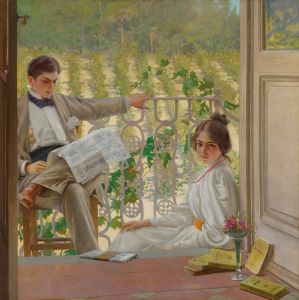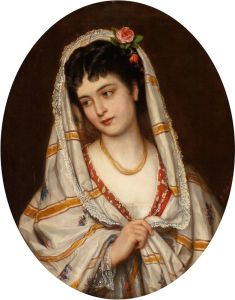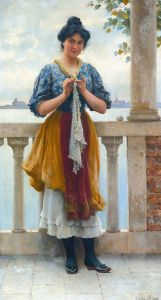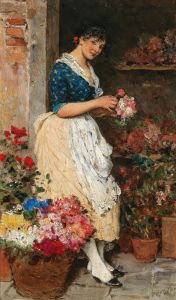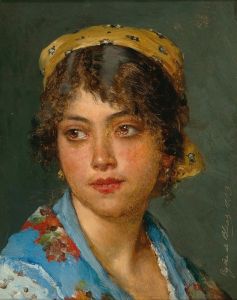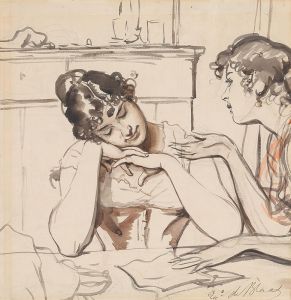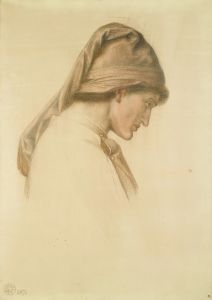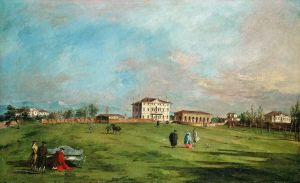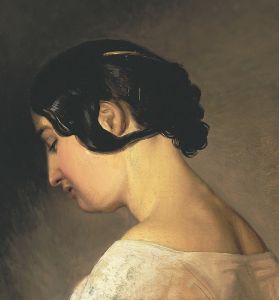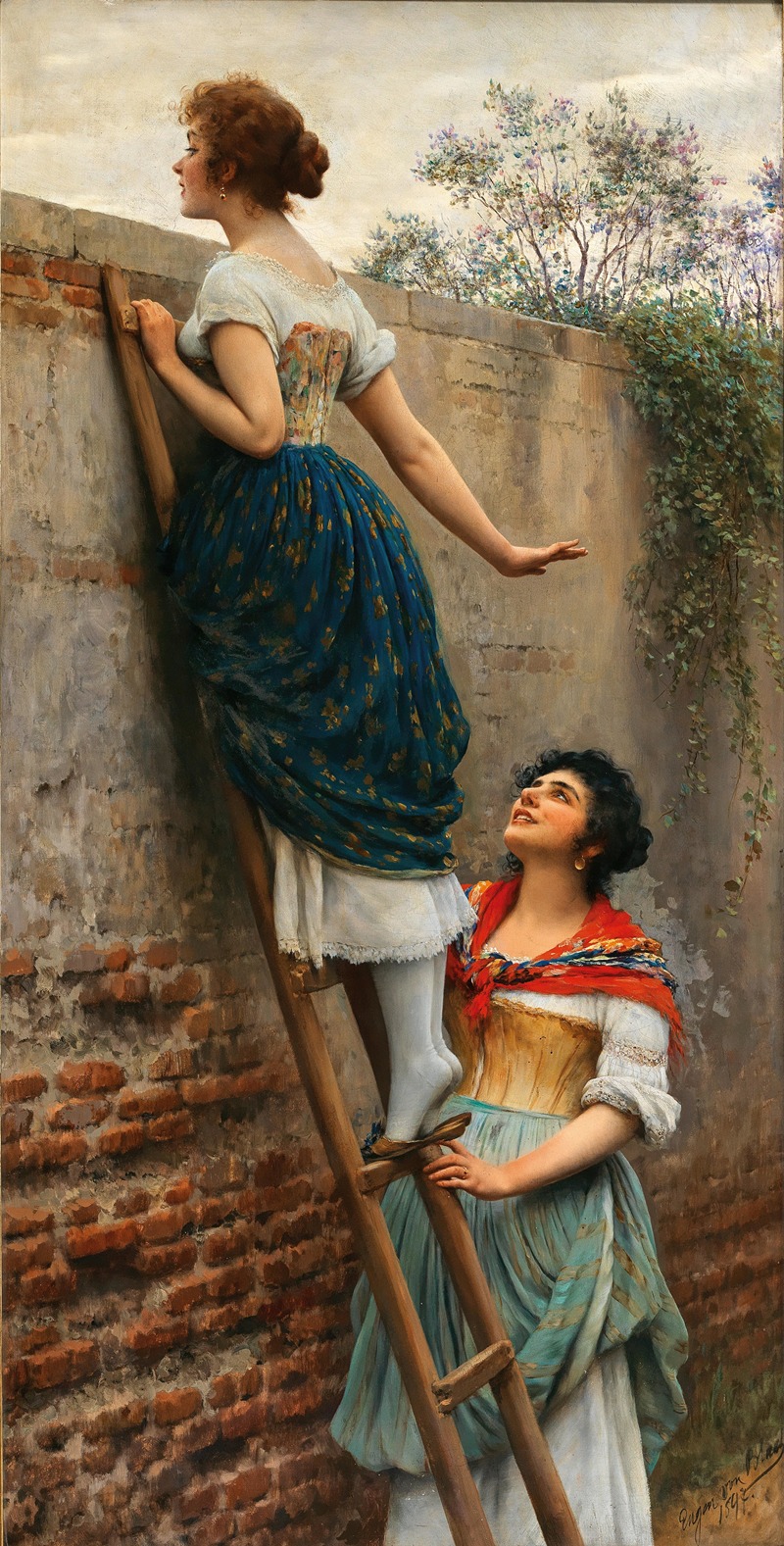
The curious
A hand-painted replica of Eugen von Blaas’s masterpiece The curious, meticulously crafted by professional artists to capture the true essence of the original. Each piece is created with museum-quality canvas and rare mineral pigments, carefully painted by experienced artists with delicate brushstrokes and rich, layered colors to perfectly recreate the texture of the original artwork. Unlike machine-printed reproductions, this hand-painted version brings the painting to life, infused with the artist’s emotions and skill in every stroke. Whether for personal collection or home decoration, it instantly elevates the artistic atmosphere of any space.
Eugen von Blaas, an Austrian painter known for his genre scenes, created "The Curious" in the late 19th century. Von Blaas was born on July 24, 1843, in Albano Laziale, near Rome, Italy, into a family of artists. His father, Karl von Blaas, was a noted painter and professor, which significantly influenced Eugen's artistic development. Eugen von Blaas is often associated with the Academic style, characterized by its attention to detail and classical themes.
"The Curious" exemplifies von Blaas's skill in capturing everyday life with a sense of charm and realism. The painting depicts a group of young women, often interpreted as Venetian, engaged in a moment of curiosity and gossip. This theme of everyday life and human interaction is a hallmark of von Blaas's work, which frequently focused on scenes of women in domestic or social settings. His paintings are celebrated for their vibrant colors, meticulous detail, and the ability to convey the subtleties of human emotion and interaction.
Von Blaas's work is often noted for its technical precision and the way he captures the textures of fabric and skin, as well as the play of light and shadow. "The Curious" is no exception, showcasing his ability to render the delicate features and expressions of his subjects with lifelike accuracy. The painting's composition draws the viewer's eye to the central figures, inviting them to share in the moment of intrigue and conversation.
Throughout his career, von Blaas exhibited his work in various prestigious venues, gaining recognition and acclaim. His paintings were particularly popular in England and Austria, where he spent much of his professional life. Von Blaas's ability to capture the essence of his subjects and the beauty of everyday moments made his work appealing to a broad audience.
Eugen von Blaas's paintings, including "The Curious," are often seen as a reflection of the social dynamics and cultural norms of his time. The focus on women in his work highlights the roles and interactions of women in 19th-century society, providing a window into the past. His art offers a glimpse into the lives of people during this period, capturing both the simplicity and complexity of human relationships.
"The Curious" is part of von Blaas's broader body of work that continues to be appreciated for its artistic merit and historical significance. His paintings are held in various private collections and museums, where they continue to be studied and admired by art enthusiasts and historians alike. Eugen von Blaas passed away on February 10, 1931, in Venice, Italy, leaving behind a legacy of art that continues to captivate audiences with its beauty and insight into the human experience.





